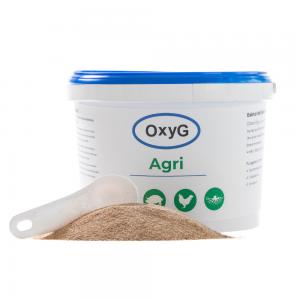- Total 0 kr
Gravity manure handling:
If you have problems with clogging or that the gravity system flows slowly and needs extra water to function. Then OxyG´s bacteria is an alternative and will break down the manure, feed spillage, straw, sawdust etcetera. The manure will be more liquefied, easy to float, you get a type of "biogas manure" in texture.
Liquid manure tanks:
The bacteria mix boost the degradation speed for grass, straw , feed spillage and sawdust in the liquid manure tank during anaerobic process and make the manure more liquefied and easier to pump and reduce the cake or sludge deposits. You should get a fluting blanket that is about 30 cm but which is wet and easy to agitate. You should also notice that once you have agitated the manure, the manure stays mixed, you should not have to agitate the well for a few days.
You should cover the bacteria cost at reduced agitator time.
The ones who handling bacterial-treated liquid manure will notice that it is much easier to handle the manure as it is easier to agitate up the tank/ lagoon, the tank stays longer mixed, easier to pump, less stops in the distributor to the ramp in the liquid spreader, easier to spread beacuse the manure is more liquid.
Solid manure: The bacteria do not make the manure liquid, but help with the decomposing process, and the smell is reduced when spread.
Pump tank: By dosing bacteria in the stable under slatted floors, the manure will be more liquefied, which makes gravity manure easier to flow and to be pumped.
Urine well: Removes / reduces ammonia and hydrogen sulfide odor
Horse manure container: Improves the composting process in the container, extends the emptying intervals, max 4 horses / container
Dosage:
Dosage is calculated on the annual amount produced of liquid manure
Dosage normal thick liquid manure: 1kg per 1000m3
Increase the dose by 50% for thick manure in the manure tank.
Dairy farmers usually dose in the drain to the robot or in the milking parlor, as many have a pump well which then pump out the effluent waste water in under the slatted floor or out into the manure chute or manure tank.
slatted floor: Divide the dosage into approx. 3 points
Clogging in a gravity manure handling system, about 1 kg to about 30-40 m gravity system is required. Dose every 3-4 meters, between the gaps with 3-4 measure cups, use a stick and push the bacteria down to the bottom of the manure channel, if the manure feels hard or a bit dry, add 2-4 liters of water in the dosing point.



